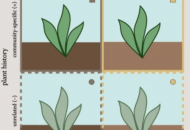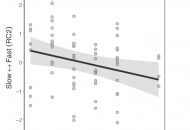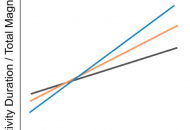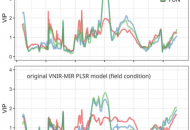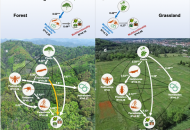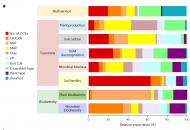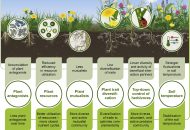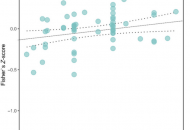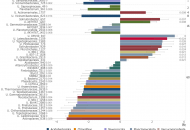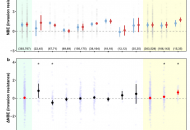Publication
-
New Publication from Amyntas et al. in Nature Communications: Soil community history strengthens belowground multitrophic functioning across plant diversity levels in a grassland experiment
Biodiversity experiments revealed that plant diversity loss can decrease ecosystem functions across trophic levels. To address why such biodiversity-function relationships strengthen over time, we established experimental mesocosms replicating a gradient…
-
New Publication from Hennecke et al. in Ecology Letters: Plant Species Richness and the Root Economics Space Drive Soil Fungal Communities
Trait-based approaches have been increasingly used to relate plants to soil microbial communities. Using the recently described root economics space as an approach to explain the structure of soil-borne fungal…
-
New Publication from Bonato Asato et al. in Soil Biology and Biochemistry: Positive plant diversity effects on soil detritivore feeding activity and stability increase with ecosystem age
Increasing species diversity frequently enhances ecosystem functioning – a pattern strengthened with ecosystem age. It has been suggested that strengthened responses over time may be due to community assembly processes…
-
New Publication from Hutengs et al. in Geoderma: Enhanced VNIR and MIR proximal sensing of soil organic matter and PLFA-derived soil microbial properties through machine learning ensembles and external parameter orthogonalization
Portable visible-to-near-infrared (VNIR) and mid-infrared (MIR) spectroscopy coupled with machine learning can provide detailed and inexpensive information on various key soil properties. However, on-site VNIR and MIR proximal sensing applications…
-
New Publication from Li et al. in Nature Ecology and Evolution: Plant diversity enhances ecosystem multifunctionality via multitrophic diversity
A latest international research has shown that, in both forest and grassland ecosystems, the association between multitrophic diversity and multifunctionality was stronger than the relationship between the diversity of individual…
-
New Publication from Zhou et al. in Nature Geoscience: Resistance of ecosystem services to global change weakened by increasing number of environmental stressors
Terrestrial ecosystems are subjected to multiple global changes simultaneously. Yet, how an increasing number of global changes impact the resistance of ecosystems to global change remains virtually unknown. Here we…
-
New Publicaion from Eisenhauer et al. in Basic and Applied Ecology: The multiple-mechanisms hypothesis of biodiversity–stability relationships
Long-term research in grassland biodiversity experiments has provided empirical evidence that ecological and evolutionary processes are intertwined in determining both biodiversity–ecosystem functioning (BEF) and biodiversity–stability relationships. Focusing on plant diversity,…
-
New Publicaion from Lipoma et al. in Global Ecology & Biogeography: No general support for functional diversity enhancing resilience across terrestrial plant communities
Aim Understanding the mechanisms promoting resilience in plant communities is crucial in times of increasing disturbance and global environmental change. Here, we present the first meta-analysis evaluating the relationship between…
-
New Publication from de Souza in FEMS Microbiology Ecology: The effect of successive summer drought periods on bacterial diversity along a plant species richness gradient
Drought is a major stressor to soil microbial communities, and the intensification of climate change is predicted to increase hydric stress worldwide in the coming decades. As a possible mitigating…
-
New publication from Cheng et al. in Nature Communications: Biodiversity increases resistance of grasslands against plant invasions under multiple environmental changes
Biodiversity often helps communities resist invasion. However, it is unclear whether this diversity–invasion relationship holds true under environmental changes. Here, we conduct a meta-analysis of 1010 observations from 25 grassland…
Posts navigation
We’ve made the move from Twitter to Bluesky. Follow us there for all the latest updates.

